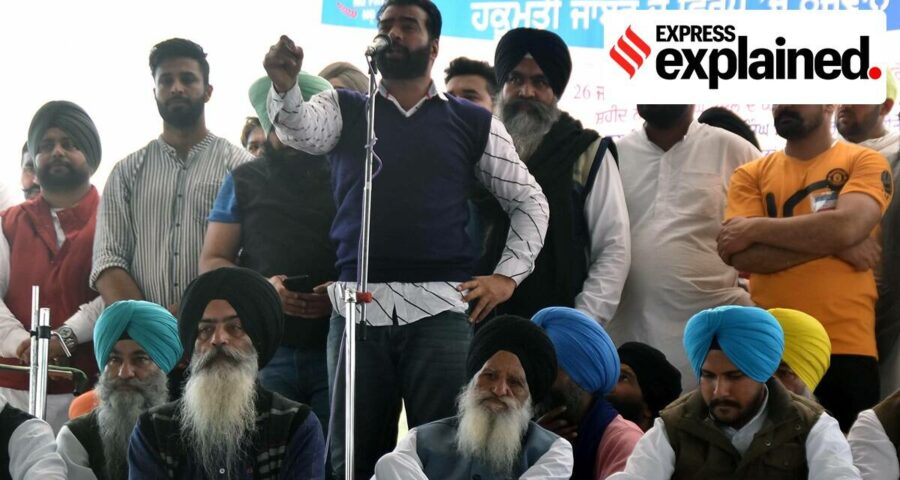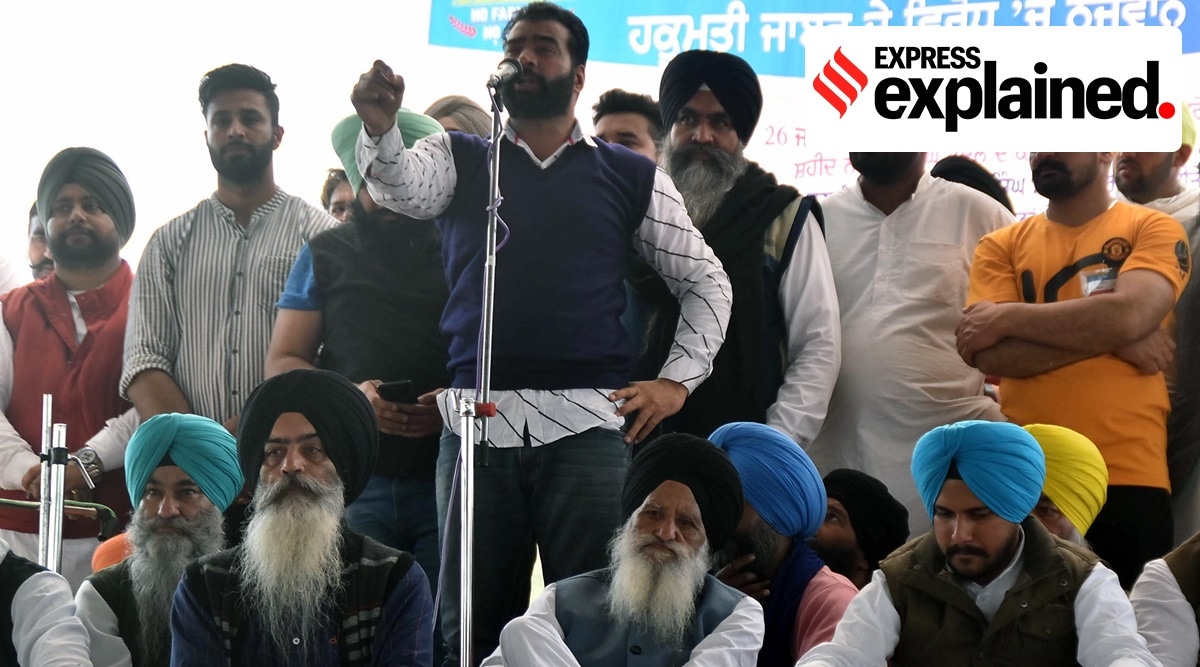Two recent rallies over the controversial farm laws have witnessed youth participation despite no mobilisation by farmer unions. A look at reasons that made these rallies work.
The Mehraj rally held on Tuesday was the second such protest over the controversial farm laws that witnessed youth participation despite no mobilisation by farmer unions. Earlier on September 25, a rally was held at the Haryana border just on calls that went out on social media. For the Mehraj rally, however, the call was mainly from former wanted gangster Lakha Sidhana with separatist group Dal Khalsa lending support. But in both these instances, the well-oiled machinery of famer unions that has been organising massive Kisan Mahapanchayats was not active. The Indian Express looks at reasons that made these rallies work.
Involving youth through social media
While farmer unions have drawn their support mostly from middle-aged and elderly farmers, and even political workers, these rallies saw the involvements of many unaligned youth who were drawn through social media by the likes of actor Deep Sidhu and former gangster Lakha Sidhana who built a narrative over farm laws to reach them through Facebook lives. It was also the first time when several social media influencers also hit ground to join the protests.
Punjabi singers too played an important role in bringing youth to the agitation.
On the flip side, farmer unions had initially denied space to the social media influencers and singers. Famous singers like Harbhajan Mann and Sidhu Mossewala were asked to stay away to avoid ‘nuisance’ during farm protest.
It was only after the Shambu rally that farmer unions had allowed singers to participate thus drawing more youth into the protest.
Ideological constraints acted as put-off
Farmer unions are mostly Left-aligned where as youth coming to their protest had no Left background. Unions wanted youth to behave like their cadre and fall in line without questioning decisions of leadership.
It was, however, unaligned youth of Punjab that had moved towards Delhi on it own in last week of November despite the fact that farmer unions had decided to not break any barricade and sit on dharna whereever they would be stopped on the way to Delhi.
Farmer unions were literally forced to reach Delhi by youth and it also sowed the seed mistrust between protesting youth and unions.
As stages at Delhi Morcha were controlled by the farmer unions, there were restrictions on who would speak from the stage. Deep Sidhu was barred from speaking on the very first day. Lakha Sidhana was barred after he expressed resentment from stage that he was made to wait for his turn to speak.
A former Punjab University president Kanupriya too had said that she also faced resistance over speaking from stage at Singhu. Later, her union was also declared as a traitor by SKM constituents along with Deep Sidhu and Lakha Sidhana.
Delay in taking up cases of arrested youth
At first, farmer unions refused to recognise all arrested after R-Day events as farmers. Facing a backlash on social media, they then drew a distinction between those who broke away from agreed route knowingly and those who did it inadvertently. Young protesters like Navdeep Singh, who become hero after turning off a police water cannon on November 25 while moving towards Delhi, even told farmer leaders publicaly to stand behind every youth arrested on January 26. Navdeep was also present at the rally in Mehraj.
📣 JOIN NOW 📣: The Express Explained Telegram Channel
Youth aligned with Sikh bodies
There are many Sikh youth bodies in Punjab, which work in small pockets and don’t have large base. All such Sikh bodies also pushed good number of youth infulencers into the protest. Many of these youngsters received notices from NIA in January and they were not happy with farmer unions allegedly not supporting them.
Unemployment, search for redemption
Unemployment in Punjab has also been citied as a reason by many for large youth participation. Further, the youth in the state have been at the receiving end for several ills plaguing the state including the drug problem. Many who joined the movement saw it as a bid for redemption. The resentment among youth against the political class, apart from farm bills issue, has also been a big force behind these unaligned rallies.
Challenge for political parties
Aam Aadmi Party had attracted Punjabi youth from 2014 to 2017 as it gave hope to common youth of finding space in mainstream politics.
With AAP not being particularly successful in harnessing that youth energy and giving a youth leader to the state picked from among the commoners, sources said, the youth has been drifting to find a rallying point.
The Mehraj rally is also being seen by political analysts as an indication to political parties that established youth leaders are not meeting aspirations of Punjabi youth. With polls due next year, this could prove a challenge for political parties in the state.
Source: Read Full Article


